Origin of Birds as Modified Dinosaurs
Biologist Arkhat Abzhanov on Archosaurs, paedomorphosis, and the evolution of birds
What can Darwin’s finches tell us about adaptive evolution? What causes adaptive radiation? How to explain the formation of these different beak shapes among Galapogos Islands birds? These and other questions are answered by Professor Arkhat Abzhanov of Harvard University.
In 1830th Charles Darwin, who was very young scientist at that time – he was only around 26, decided to go around the world on the famous HMS Her Majesty ship “Beagle” and he spent about five years in the ocean going around the world. One of the locations that he visited, that made a huge impression on young Charles Darwin, was the Galapagos Islands. The Galapagos Islands are relatively young volcanic islands about a 1000 kilometers in the Pacific from the mainland of South America. When he arrived there he was astonished to find that there are many species – different sets of the species on each island – of different animals including mostly reptiles and birds, including these land birds which are now known as Darwin’s finches, because he was actually the first person who collected them for science. He brought them back to England, he described them and he used them in his works as an example of this new process that he was trying to explain – the process of adaptive evolution by natural selection.
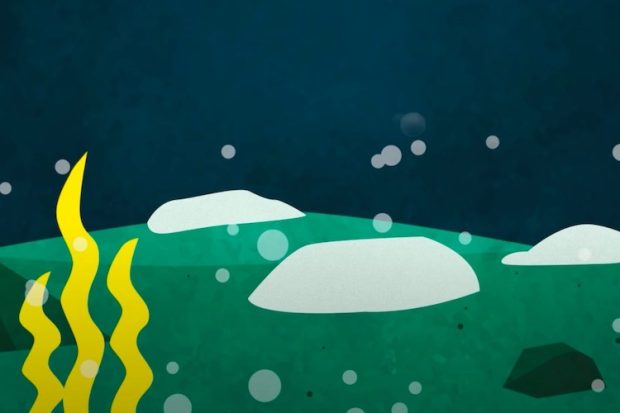
Darwin’s finches are small land birds. They’re on the surface not very remarkable; they’re brown and black birds which live on these lava rocks on the Galapagos Islands. What is remarkable about these birds is that there’s about fifteen species, each of them is eating a different type of food. They can do that because they have very different looking beaks. Very often its beaks have been compared with human tools. Some of these beaks are very heavy and very deep. They are used to crack very-very hard seeds. In fact, one of that species is the large ground finch. The ground finch, so it refers to the fact that it collects seeds on the ground, spends a lot of time on the ground. The large ground finch has extremely deep, very-very deep, very-very broad bill and it’s using its bill to crack very hard seeds. In fact, to crack those seeds you need a pair of pliers because it takes about three hundred Newtons to crack some of those seeds. When they crack those seeds, you can hear it hundred meters down the road. It’s a very unique niche because that’s something that no other bird can do. No other birds can touch those seeds so it’s a very particular niche and the bird is enjoying it.
Another species of Darwin’s finch has his very-very long beak, very pointed bill, and this beak is used to get the nectar and pollen from cactus flowers, it’s a cactus finch. Its entire life is revolving around the cactus: it builds a nest on a cactus, it feeds on a cactus and it can penetrate the cactus flower and get the sugar rich food from it. And again no other birds on the Galapagos Islands can do that, it’s another example of specialized beaks. So many other niches: there’re birds which feed on large insects, there are birds which catch small flying insects, there is a vampire finch – it’s actually using its very sharp bill to cut wounds on sea lions and iguanas and drinks their blood. On these otherwise very barren islands, there is not a lot of food, there are small piles of food on these islands and these birds managed to survive by evolving beaks, which allow them to feed on very different food types.
What we know however is that all these birds evolved from a single type of bird. They actually are related to particular type of bird called grassquit, which still lives in the Caribbean Islands. These birds look like small sparrows, they actually feed on grass seeds and yet a bird like this evolved from South America, from the Caribbean, evolved to occupy this very distant niches which on mainland normally occupied by different families of birds: the birds which look like thrushes, the birds which look like crossbills, birds which look like warblers and many other types of birds, sparrows, starlings and so forth. So Darwin was astonished by this. When he brought them back he thought they really were different types of birds. He brought them in the bag, he gave them to his friend John Gould who was a director of the ornithology department at the British Museum of Natural History in London.
And a little later this ornithologist got back to Darwin and he said: “Actually all these bird you present, if you look at their morphological characteristics, they are close relatives, they actually present one group of birds. They happen to have very different beaks, but they otherwise are very close related”. And actually this what’s Darwin’s thinking: why would there be so many different looking birds, all close related on these islands? What he realized on some point is that when their ancestors got to the Galapagos Islands they all has available niches and no competitors. Any mutation, any kind of change that allows these birds to change the beak in different directions, allows them to take different types of foods, would allow more of these birds to survive and that actually produced what we now call an adaptive radiation. But it’s from one single species multiple species reproduce adaptively because now they occupy different types of ecological niches. You can see Darwin’s finches are a very important.
In fact, the iconic example of this process, which Darwin tried to describe, is an adaptive evolution by natural selection.
What we’re trying to do in our work, we’re hoping to provide more mechanistic explanation of what actually happens with these birds, how we actually explain this formation of these different beak shapes. This started as a collaboration with Peter and Rosemary Grants. The Darwin’s finches were studied for the last 150 years. Since Darwin described them, there were many generations of biologists who went back to the islands and described their ecology, described their evolution, described their biology, and so we actually know a lot about these birds. The Grants, the reason why they are famous is that they have been studying these birds since 1970th, for about forty years now, on some of the smaller islands they would go in and they would capture all the birds, they would measure all the beak shapes, they would know every single bird there and would track these birds for generations. For forty years they actually studied how the beak shapes changed.
These islands are in the middle of the El Niño phenomenon, so every few years this major rainy period: it’s El Niño lots of rain comes in, everything on the islands turn to green jungles, there are a lot of pretty good types of food, pretty good types of plants grow, and then all the rain disappears for the several years and goes through the period of drought and the vegetation changes completely. All that causes a huge amount of natural selection on these islands. One of the reasons why they look so different, despite being close relatives, is because the natural selection there is extremely harsh and the conditions change very dramatically. The Grants were able to show as these islands were giant Petri dish, how beak shapes change over time of these forty years they saw how in some cases how the beaks became longer in some species, they became deeper in other species or they diverged and turned into two different forms in other species.
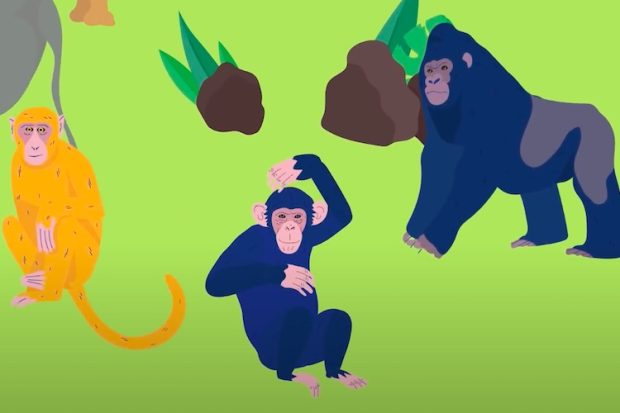
It’s a fantastic example of morphological evolution ,that is happening before your eyes, so it’s one of the best documented cases of evolution actually happening and one can actually watch it. What we wanted to do again is to explain from genetics perspective, from developmental perspective, how it actually happens. What the Grants noticed is when the birds hatch from an egg – when the ground finches, or the tree finches, or the cactus finches, all these finches with different beaks hatch from an egg – they already have the right type of beak on them. A while before they use these beaks, a while before they used these beaks to feed on flowers or feed on seeds, they already made them particular shape. We showed later that if you actually go into the egg, if you look at the embryo of the species several days before hatching, half way thought development, they already have the right type of beak on them. It’s a highly developmental process.
We know these structures are skeletal and the Grants also showed that if you compare the beak shapes in parents versus offspring and if you measure it for multiple generations you can show that heritability, that is the amount of genetic control over beak shape in this structure in the beak is extremely high – it’s about 0.9. ‘One’ being perfectly genetic, ‘zero’ – meaning it’s up to environment to shape the structure. So genetic control over beak shape is actually very-very tight, so it’s developmental, it’s skeletal and it’s genetic, which makes it rather ideal for our study by developmetal biologists like ourselves. We went to the field for this project – you have to go to the Galapagos Islands, these birds do not live anywhere else, – and in the way how it works we try to get there before the rainy season starts and then we look for singing males, we map their territories we find where they build a nest and we track their nests, when we collect the eggs, we only collect the last egg, it’s usually the forth egg, the birds lay replacement egg. They can count and they will again finish their clutch and we have our own egg and birds happy with theirs. We take this egg take it to incubator and develop it for precise periods of time, because we know what kind of important features develop during embriogenesis.
Our challenge was to try to explain how these beaks develop differently in the embryos and we took two approaches, two experimental approaches, both of them are especially prepared for biology. One of them is what’s called candidate gene approach. The first time we went to the field we didn’t know much about the developing of finch beaks but we already knew something about how the heads in vertebrates develop because my lab is trained as the group of scientists who study vertebrate craniofacial biology that is a process by which the entire head and neck region of vertebrates are put together using genetic and developmental processes. We had a list of candidate genes about 20 genes which we knew were involved in craniofacial development and the head development of vertebrates. We collected embryos from some of the key species which represented basal condition that is very simple beaks which were used to feed on the grass seeds primitive beaks but also seeds from these very advanced birds with very deep bills for cracking seeds with very long beaks for feeding on cactus flowers. We collected embryos from those three different key stages before beak formation after beak formation and later one the beak is already developing its beak species-specific shape and we brought those embryos back to the lab we section them and we analyzed expression of these candidate genes on those embryos.
We found that one of these genes was actually expressed in very good correlation with the beak shape of ground finches to remind you this is the big shape which is very deep.
The beaks have a lot of depth and a lot of width. These very heavy beaks they use to crack seeds so it turns out that the embryos of birds with these beak shapes they express a particular molecule called BMP4 and BMP4 is short for ‘bone morphogenic protein 4’. It’s a developmental molecule which regulates skeletal formation. This particular molecule BMP4 was expressed differently in species which had very deep and very broad bills, it was expressed a couple of stages earlier much earlier that it would normally expressed in a beak for example in a chicken. But it will also be expressed in much higher levels so we had a very nice correlation between very deep and very broad bills, these very finchy bills and higher and early expression of BMP4, so morphological change and molecular change.
The next thing we wanted to do of course is we wanted to do functional analysis and show that the two are related. We used a chicken embryos and chicken embryos are great because we can order the large numbers of them they’re fairly cheap and chicken embryo is also good because it can make a little window on an egg so you move part of the shell and we can watch the developing embryo before our eyes all the way from the beginning when it looks just like a little floating disk all the way to the end hatching of a little chicken. The entire process of development is happening before your eyes and embryo is very readily accessible, you can manipulate its tissues, we can move tissues around, we can play with embryo.
If you do that if you just do this very simple molecular trick, if you just simply mimic what happened in nature during the evolution of the ground finches, you get very deep and very broad bill, you get this very nice broad finchy bill on the chicken embryo. If you actually tighten the virus, depending on how much BMP4 the beak sees during its development, you can put it, you can fin a copy and reproduce beak shapes of the smaller ground finches all the way to the large ground finches which have this very tremendous bill which grows from its forehead, and again it’s used to crack very hard seeds.
In other words we’re able to show that this simple molecular change is quite sufficient to explain this morphological change evolution of the novel beak shape in Darwin’s finches.
Another approach which we took since then was by using DNA chips we basically isolated a lot of genes expressed in the developing beaks about 20.000 genes and we printed them on the glass slides. We could understand simultaneously our computer expression levels of but about 20.000 genes across all the species to look for other genes which were associated with other beak shapes.
For example, we found that another gene called CA-modeling, its expression, its higher expression correlates with a cactus finch bill which has very long bill for feeding on cactus flowers. So CA-modeling was expressed in very high levels in a particular domain, particular expression domain inside the cactus finch’ embrionic beaks. We mimic this change in chicken embryos again. We mimic high expression CA-modeling and they got much longer beak in chicken embryos that we were again able to show that these species specific changes, evolutionary changes could be understood from genetic perspective. We could find developmental candidate genes which correlated with those morphological changes, and by manipulating those we could show that we could bring about those morphological changes that we’re see in wild nature and the speech of Darwin’s finches in the laboratory and chicken embryos.
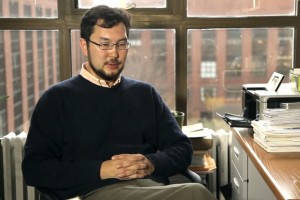
Biologist Arkhat Abzhanov on Archosaurs, paedomorphosis, and the evolution of birds
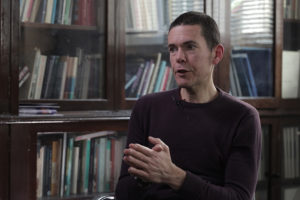
Geographer Mathias Disney on the deforestation, forested environments and what is needed to reduce deforestati...
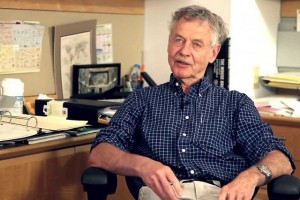
Biologist Rudolf Jaenisch on invention of IPS cells, the epigenetic state of the genes, and making a liver in ...